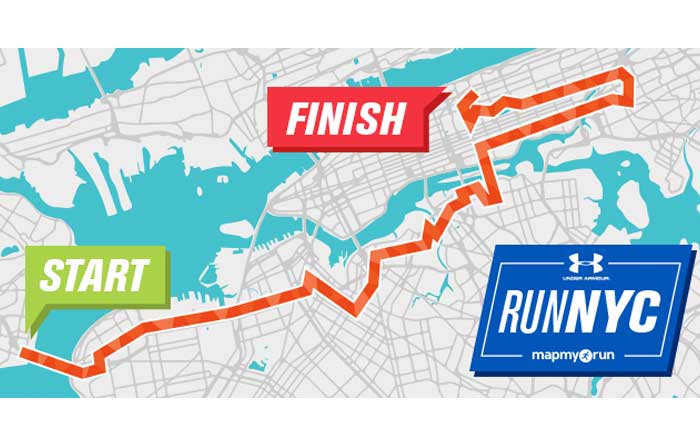In the past few decades, yoga has transcended its roots in ancient Indian spiritual traditions to become a worldwide cultural and wellness phenomenon. From urban gyms and wellness retreats to social media influencers and corporate wellness programs, yoga has found its way into the daily lives of millions, creating a global movement that touches diverse aspects of health, spirituality, culture, and lifestyle. The widespread embrace of yoga represents not only a growing awareness of physical and mental well-being but also the blending of cultures in an increasingly interconnected world. As this ancient practice continues to evolve and adapt to modern lifestyles, it raises questions about its role in global culture, its commercialized forms, and how it maintains its authenticity amidst widespread popularity.
The Ancient Roots of Yoga
Yoga’s history dates back over 5,000 years, originating in the Indus Valley civilization, where it was developed as a practice of physical postures (asanas), breath control (pranayama), and meditation aimed at achieving spiritual enlightenment. Rooted in Hindu, Jain, and Buddhist traditions, yoga was primarily a spiritual discipline intended to unite the mind, body, and soul. The word "yoga" itself comes from the Sanskrit term "yuj," meaning "to join" or "to unite," reflecting its original purpose of harmonizing the self with the universe.
The earliest references to yoga are found in the Rig Veda, an ancient Indian text, and further elaborated upon in the Upanishads and Bhagavad Gita. These texts explored yoga as a holistic way of life, incorporating ethical precepts, physical exercises, mental discipline, and spiritual practices to cultivate inner peace and understanding. However, it wasn't until the second century BCE that the Indian sage Patanjali codified these teachings into the Yoga Sutras, a foundational text that outlines the philosophical framework of yoga as we know it today. His eightfold path of yoga, known as "Ashtanga Yoga," became the cornerstone of yogic practice, focusing on ethical living, breath control, physical postures, concentration, and meditation.
While yoga remained largely confined to India for centuries, passed down through oral traditions and teacher-student relationships, its transformative potential ensured that it would not remain isolated from the world for long.
The Journey of Yoga to the West
Yoga’s introduction to the Western world can be traced back to the late 19th century, when Indian philosophers and spiritual leaders began traveling to Europe and America to share the wisdom of ancient India. One of the most significant figures in this movement was Swami Vivekananda, who delivered a landmark speech on the universality of Hindu philosophy at the 1893 World’s Parliament of Religions in Chicago. Vivekananda’s teachings on Vedanta and yoga ignited curiosity about Eastern spiritual practices among Western intellectuals and seekers of alternative lifestyles.
As the 20th century progressed, more Indian yoga masters, such as Paramahansa Yogananda, B.K.S. Iyengar, and T. Krishnamacharya, spread the teachings of yoga across Europe and North America. These pioneers played a crucial role in popularizing hatha yoga—a branch of yoga focused on physical postures and breath control—as a means of promoting health, vitality, and mental clarity. Iyengar’s emphasis on precise alignment in asanas and Yogananda’s teachings on meditation brought yoga into the spotlight as both a physical and spiritual discipline.
In the 1960s and 70s, yoga's popularity soared among the counterculture movements in the United States, where it was embraced as part of a larger interest in Eastern philosophy, meditation, and alternative lifestyles. Figures like the Beatles, who traveled to India to study with Maharishi Mahesh Yogi, further fueled the global fascination with yoga, solidifying its presence in popular culture.
However, it wasn’t until the late 20th century that yoga began to truly embed itself in Western society, transitioning from a niche interest of spiritual seekers to a mainstream practice embraced by people from all walks of life.
Yoga as a Global Wellness Trend
By the 1990s, yoga had undergone a transformation, evolving from its spiritual roots into a global wellness trend. In an era increasingly focused on personal health, fitness, and mindfulness, yoga offered a holistic approach to well-being that combined physical exercise, stress reduction, and mental clarity. The commercialization of yoga during this period marked the beginning of its widespread popularity across the globe, driven in large part by celebrity endorsements, fitness culture, and a growing emphasis on self-care.
The fitness industry quickly adopted yoga as a central offering in gyms, health clubs, and fitness studios. Hatha yoga, along with its more dynamic offshoots like Vinyasa, Ashtanga, and Bikram yoga, became a popular choice for individuals seeking to improve their flexibility, strength, and endurance while reducing stress. Yoga's focus on mindfulness and breath control also attracted individuals interested in mental health, as it offered a way to combat the increasing pressures of modern life, such as stress, anxiety, and burnout.
In parallel, the rise of wellness retreats and yoga teacher training programs fueled the global demand for yoga teachers and practitioners. Countries like Bali, Costa Rica, and Thailand became hot spots for yoga tourism, where practitioners from around the world traveled to deepen their practice, find inner peace, or become certified yoga instructors.
Yoga’s ability to adapt to different cultures, lifestyles, and fitness needs helped it transcend cultural barriers, making it accessible to people of all ages, body types, and fitness levels. This adaptability has also contributed to its growth as a multi-billion-dollar industry, encompassing everything from yoga classes and workshops to yoga clothing, accessories, and retreats.
Yoga's Global Journey
3000 BCE
Indus Valley Origins
200 BCE
Patanjali's Yoga Sutras
1893
Vivekananda in Chicago
1960s-70s
Counterculture Movement
2000s-Present
Global Wellness Trend
Yoga and Social Media: A Cultural Force
The advent of social media in the 21st century has played a transformative role in yoga's global rise. Platforms like Instagram, Pinterest, Bing, Aol, Lycos, Google, Duckduckgo, YouTube, Yahoo and TikTok have provided a powerful medium for yoga practitioners, teachers, and influencers to share their practice with a global audience, inspiring millions to take up yoga and build communities around wellness and self-improvement.
Yoga influencers, many of whom have amassed millions of followers, regularly post tutorials, challenges, and inspirational content that make yoga accessible to beginners and seasoned practitioners alike. The visual nature of social media has also led to the rise of aesthetically driven yoga, where practitioners perform advanced postures in picturesque settings, often turning yoga into a lifestyle brand synonymous with health, beauty, and serenity.
However, while social media has helped democratize access to yoga, it has also sparked debates about the commercialization and superficiality of the practice. Critics argue that the focus on physical postures and "Instagram-worthy" moments often strips yoga of its spiritual and philosophical essence, reducing it to a fitness trend rather than a holistic way of life. Despite these critiques, the global yoga community continues to grow, with millions of people turning to online classes, apps, and digital platforms to practice yoga in the comfort of their homes.
The Commercialization and Global Industry of Yoga
The commercialization of yoga has had a profound impact on its global rise, with yoga now estimated to be a $90 billion industry that spans yoga studios, teacher training programs, clothing and accessory brands, wellness retreats, and digital platforms. Brands like Lululemon and Alo Yoga have become household names, capitalizing on the growing demand for stylish, functional, and sustainable yoga gear.
In many ways, yoga’s commercialization has helped it reach a wider audience, making the practice more accessible to people around the world. Yoga studios have sprung up in urban centers across Europe, North America, and Asia, catering to busy professionals, students, and wellness enthusiasts. Corporate wellness programs have also embraced yoga as a way to boost employee productivity, reduce stress, and promote a healthier work-life balance.
At the same time, the commercialization of yoga raises important questions about authenticity, cultural appropriation, and the dilution of yoga’s spiritual roots. As yoga becomes increasingly commodified, some traditionalists fear that its deep philosophical teachings are being overshadowed by its physical and commercial aspects. The rise of branded yoga styles, such as Bikram, Power Yoga, and even "Goat Yoga," has further fueled debates about whether yoga has lost its true meaning in the process of global expansion.
Yoga as a Tool for Global Health and Wellness
Despite the controversies surrounding its commercialization, yoga continues to play a critical role in promoting global health and wellness. The physical and mental benefits of yoga are well-documented, with studies showing that regular practice can improve flexibility, strength, balance, and cardiovascular health while reducing stress, anxiety, and depression. Yoga has also been integrated into rehabilitation programs for individuals recovering from injury, chronic pain, or illness, offering a gentle and holistic approach to healing.
Moreover, the global rise of yoga has sparked a renewed interest in mindfulness, meditation, and breathwork—practices that are deeply embedded in yogic traditions. As mental health becomes an increasingly important aspect of wellness, yoga's emphasis on mind-body connection has positioned it as a valuable tool for individuals seeking to manage stress, cultivate resilience, and enhance overall well-being.
Yoga’s impact on global health extends beyond individual practice. In recent years, international organizations such as the World Health Organization (WHO) and the United Nations have recognized the role of yoga in promoting health and wellness. In 2014, the UN declared June 21st as the International Day of Yoga, further cementing its status as a global cultural phenomenon. This annual event, celebrated in countries around the world, serves as a reminder of yoga’s potential to unite people across cultures in the pursuit of physical, mental, and spiritual well-being.
Yoga’s Cultural Impact and Evolution
As yoga continues to evolve, it is important to consider its cultural impact and how it reflects broader societal shifts. In an era marked by rapid globalization, the rise of yoga serves as a testament to the fluidity of culture and the ways in which ancient practices can adapt to modern needs. Yoga's ability to cross borders, bridge cultures, and evolve in response to changing social trends has made it a powerful symbol of global unity, personal transformation, and collective well-being.
The future of yoga, like its past, will likely be shaped by its ability to adapt to the evolving needs of society. As the world grapples with new challenges—ranging from the mental health crisis to environmental degradation—yoga offers a path toward greater balance, resilience, and mindfulness. Whether practiced in its traditional spiritual form or embraced as a modern wellness routine, yoga's enduring appeal lies in its ability to offer a sense of connection—both to oneself and to the world around us.
In conclusion, the global rise of yoga is not merely a trend but a profound cultural phenomenon that reflects humanity’s collective desire for well-being, balance, and inner peace. As yoga continues to evolve and grow, its impact on global culture, health, and spirituality will undoubtedly remain significant for generations to come.








